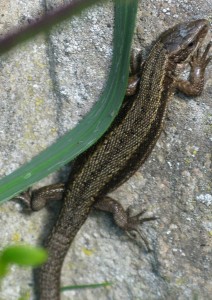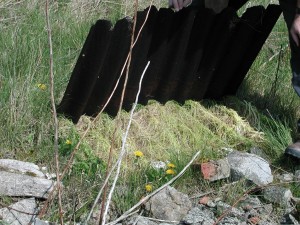Survey
There are six species of reptiles native to the UK. Adders, common lizards and slow worms, are  most prevalent on dry heathlands and moors, but semi-natural areas with heath-like conditions such as railway embankments, sea walls, road verges, churchyards, golf courses and almost any area with a sunny south facing slope and open vegetation may be suitable.
most prevalent on dry heathlands and moors, but semi-natural areas with heath-like conditions such as railway embankments, sea walls, road verges, churchyards, golf courses and almost any area with a sunny south facing slope and open vegetation may be suitable.
The grass snake feeds mainly on amphibians and is usually associated with wetlands and grasslands. Sand lizards and smooth snakes are restricted to heaths and downs in the south of England.
In the UK, all native reptiles are protected by law.
 Reptile surveys combine a transect walk across the site with the laying out and checking of artificial refuges made of tin sheet or squares of roofing felt.
Reptile surveys combine a transect walk across the site with the laying out and checking of artificial refuges made of tin sheet or squares of roofing felt.
The refuges are set out in an array within areas of suitable habitat.
We check them regularly for reptiles who like to bask on the warm surface or hide underneath it.
All native reptiles hibernate, and surveys can only be carried out during the summer months.
Legislation
In Britain, all native reptiles are protected under Schedule 5 of the Wildlife and Countryside Act 1981 and under Schedule 2 of the Conservation of Habitats and Species Regulations 2010 (as amended).
The law pr otects against:
otects against:
- Selling, offering or exposing for sale, or having in possession or transporting for the purpose of sale, any live or dead wild animal or any part of, or anything derived from, such an animal;
- Publishing or causing to be published any advertisement likely to be understood as conveying buying or selling, or intending to buy or sell, any of those things.
Reptiles are also listed as a Species of Principal Importance under the NERC Act 2006.
